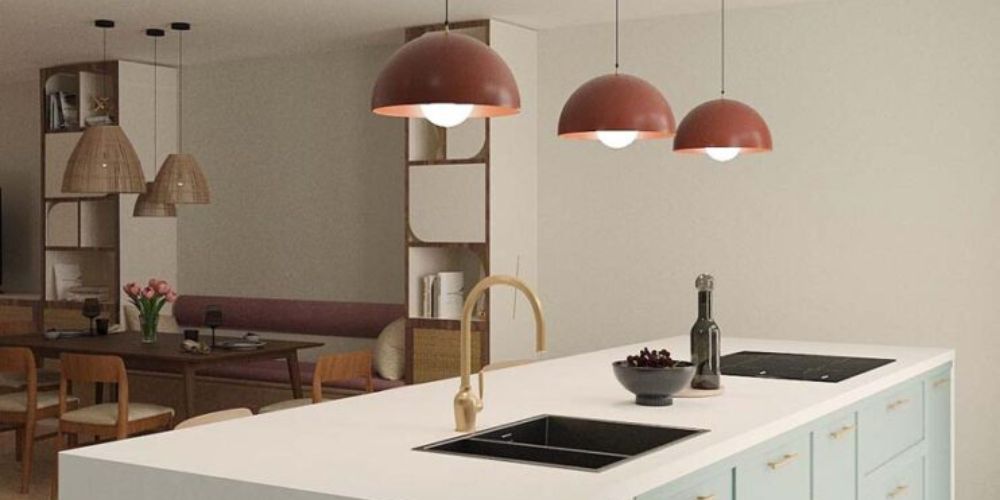Small rooms have peculiar design challenges, and one aspect is making the space not appear cramped or cluttered. Practical, simple interior design maximizes minimal space by making it comfortable and beautiful. Critical design principles will make small spaces seem more extensive and more relaxed when applied strategically.
In this blog, explore tips for making the most of small spaces. These tips include decluttering, using vertical space, and choosing multi-functional furniture. We will also discuss the benefits of light colors and enhancing natural light. Additionally, we will cover using mirrors, considering scale, and adding built-in storage. Finally, we will talk about using rugs and embracing a minimalist style.
Tip 1: Declutter And Minimize
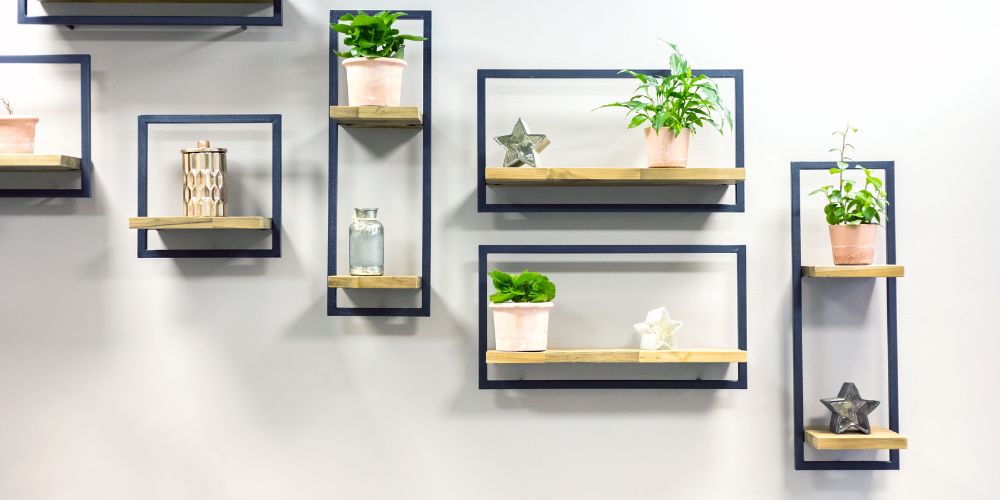
Decluttering makes small spaces appear bigger because extra things instantly create chaos and clutter. Keeping clutter to a minimum retains that cleanliness and airy sensation inside, everything brings function to the space. Organizations in such spaces use intelligent storage solutions for simple interior designs.
- Employ storage bins and baskets to keep small items tidy and tucked away.
- Implement a “one in, one out” rule to prevent unnecessary belongings.
Tip 2: Utilize Vertical Space
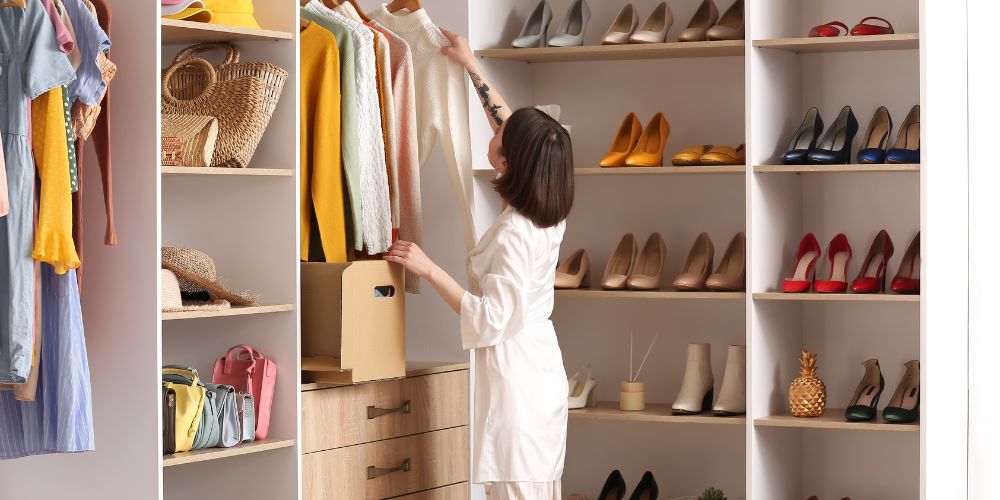
You must make it a point to utilize vertical space whenever you want to clear up small rooms, the floors would remain clear and, hence, Install shelves, racks, and wall-mounted storage devices to avail maximum overhead storage without sacrificing worthwhile square footage in the room. Besides, framing artwork or hanging flowering plants adorning a room typically draws your eyes upwards, creating a roomy atmosphere with simple interior design.
- Install floating shelves to display books and decorations.
- Utilize tall show cabinets or floor-to-ceiling bookcases for adequate storage.
Tip 3: Choose Multifunctional Furniture
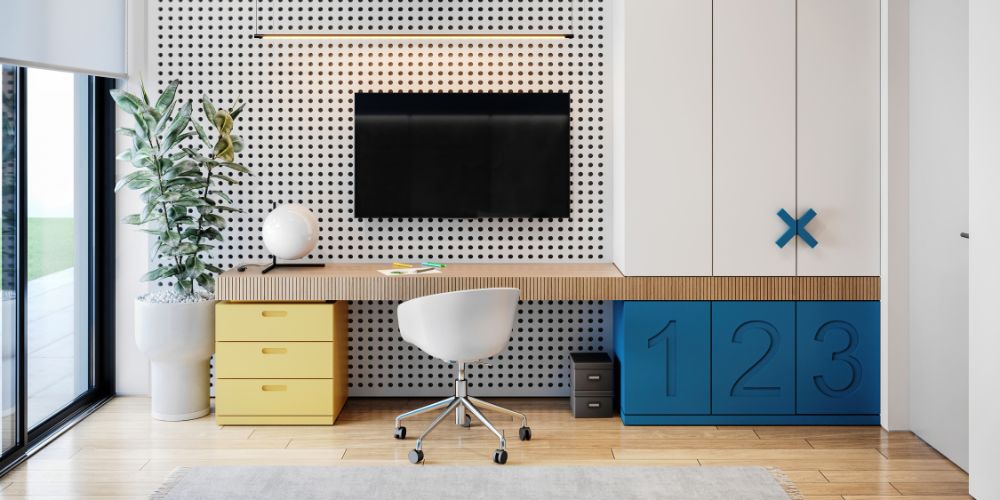
Multifunctional furniture selection is the key to small spaces. It enables one piece of furniture to cover more than one functional job simultaneously without causing congestion within the room. Examples include sofa beds that can be slept on, ottomans with hollow storage places inside, and extendable dining tables. These are indeed the ideal multipurpose furniture items for simple interior design. Multifunctional pieces provide more space, minimize clutter, and protect functionality.
- Use furniture where the storage component is not visible, like a bed with drawers or a coffee table with compartments.
- To be flexible, choose easily moved or folded items, such as collapsible desks or stackable chairs.
Tip 4: Opt For Light Colors
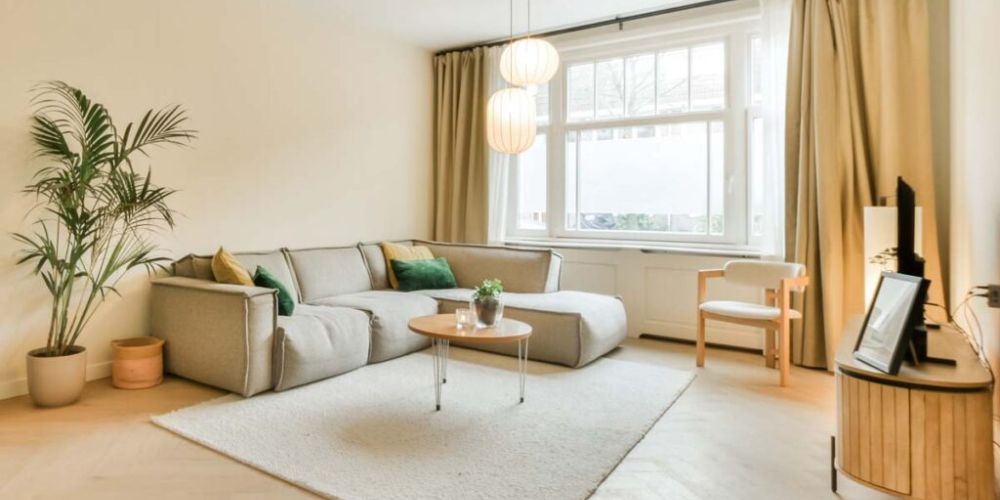
Light colors can create a psychological effect. They can make a small room feel larger and airier than it is. Soft shades reflect a lot of light and create an impression that adds to room space without revealing crampy rooms. White creams, pale grays, or soft pastels in light blue or blush shades can be good color palettes for small areas. If you’re unsure about the best color palette for your small space, consult with an interior designer to get personalized advice.
- White or off-white walls will give you that classic, open feel.
- Add light accents with pastel color hues through furniture or textiles for soft color.
Tip 5: Maximize Natural Light
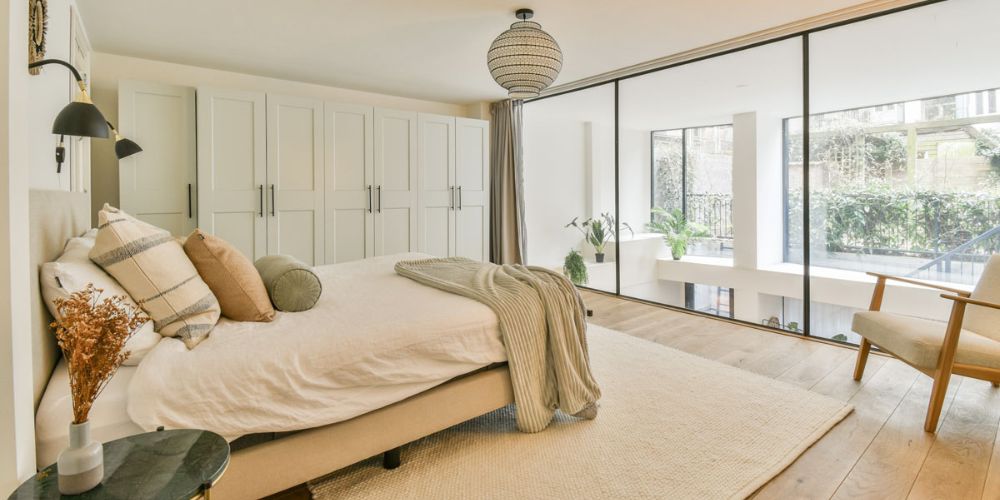
Natural light brightens up a space and helps small rooms feel more open. The room’s ambiance is much better since it is usually warm and inviting. Following are some extra measures you can use to maximize the amount of natural light:
- Employ sheer curtains or blinds of light so the sunlight can penetrate while keeping personal space private.
- Remove obstacles like large furniture from window areas, for instance, to make the sunlight flow as much as possible.
Tip 6: Use Mirrors Strategically
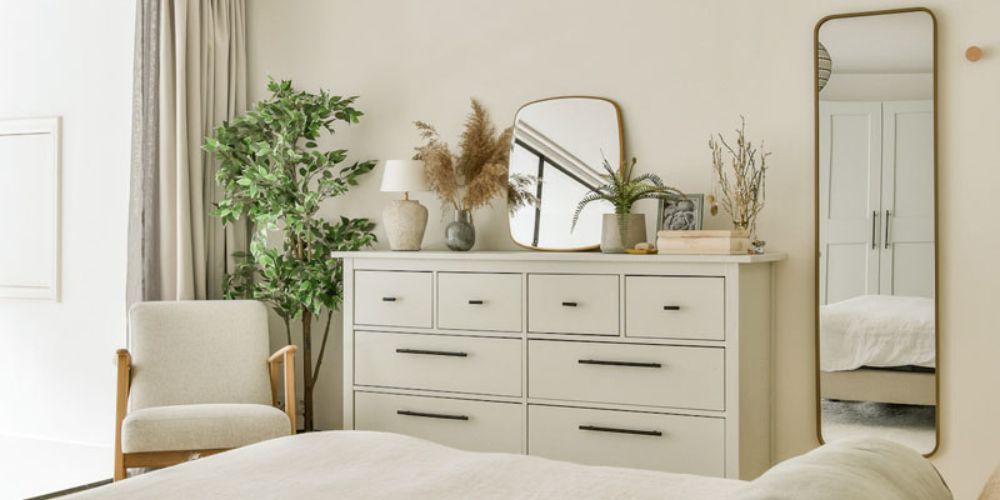
In small rooms, mirrors are powerful tools for creating an illusion by reflecting light and visually expanding the room area. If well-placed, mirrors can contribute in simple interior designs and can be helpful for functionality and aesthetic appeal.
- Place a large mirror opposite a window. The reflection of the light will make the room look brighter and more open.
- Hang mirrors on the walls opposite entryways to create depth and give narrow spaces a feeling of greater width.
Besides their practical uses, mirrors can be used to decorate a room, making it much more fashionable and smartly appealing.
Tip 7: Consider Scale And Proportion
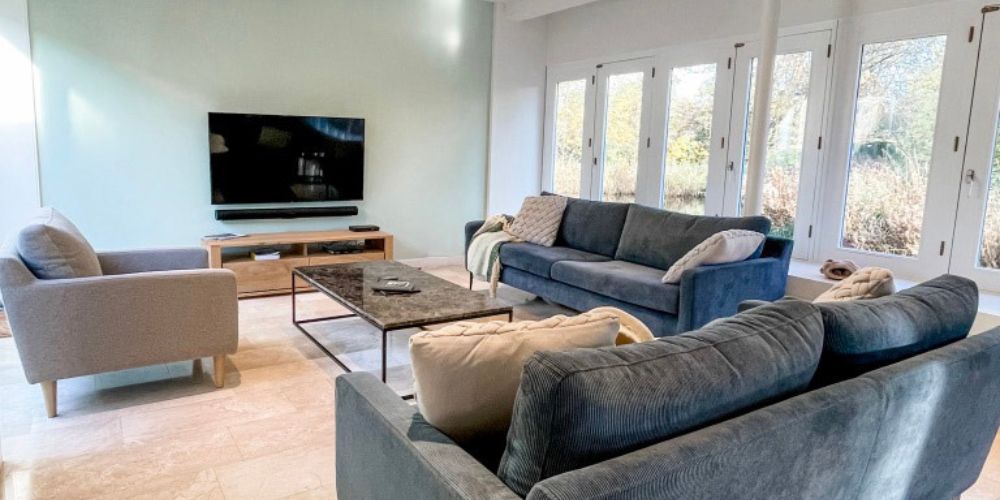
Scale and proportion are crucial in small rooms, maintaining balance and preventing cramps. Choosing furnishings and other decorative items that suit a room creates harmony and allows easy movement. Pieces with smaller footprints or more streamlined builds will help prevent the room from feeling cramped.
- Employ furniture with slender legs or low profiles for an open feeling.
- Limit the number of decorative items to avoid visual clutter and overcrowding.
Tip 8: Incorporate Built-In Storage
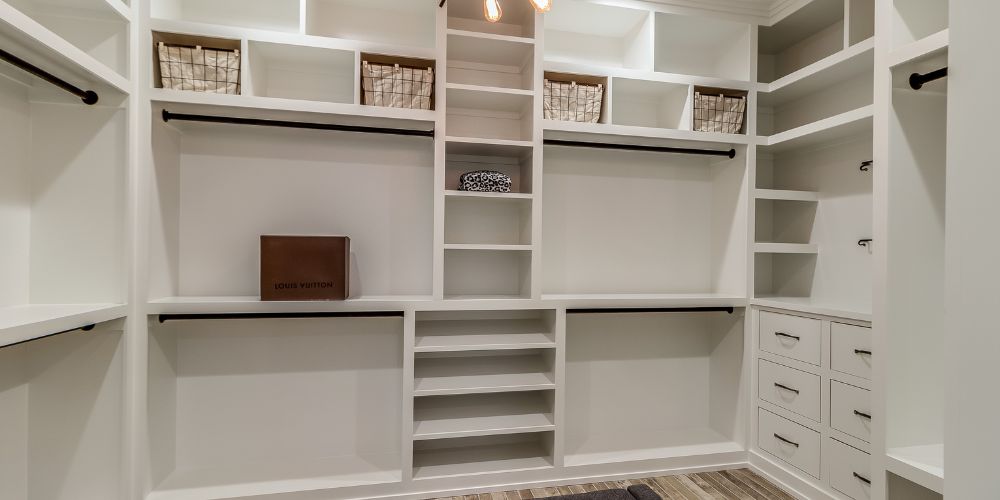
Built-ins are perfect for small spaces and are preferred in simple interior designs because they maximize rooms rather than taking up more space with bulky furniture. The genius of built-ins is how they integrate storage into walls or the God-given dead spaces in your home to keep everything in its place and out of sight. Custom built-ins can be made in any configuration fitting for what you will use them for at your discretion-shelf units, for example, window seat storage or even floor-to-ceiling closets.
- Install built-in shelves around doorways to use what would otherwise be wasted space.
- Install benches below storage windows for practical, space-saving seating.
Incorporating built-in storage keeps small spaces functional and clutter-free.
Tip 9: Use Area Rugs Strategically
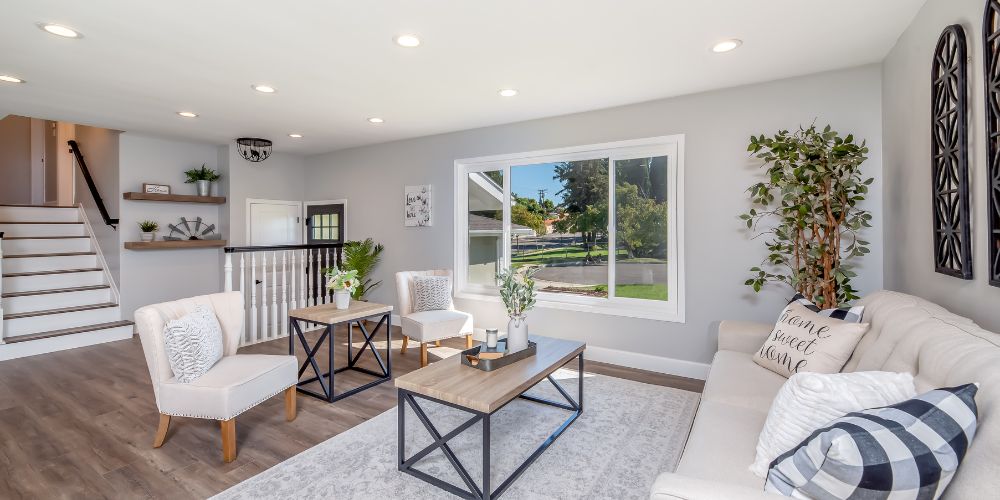
Area rugs define different areas- from a living space to a dining nook in a studio apartment. A rug has to be the correct size and style, too large, and the room gets overwhelmed, too small, it’s out of place. Rugs should be chosen that fit under furniture with some floor still exposed.
- Use rugs with subtle patterns to avoid cramming the space.
- Place rugs to add color and texture, enhancing the room’s visual interest without clutter.
Tip 10: Embrace Minimalist Decor
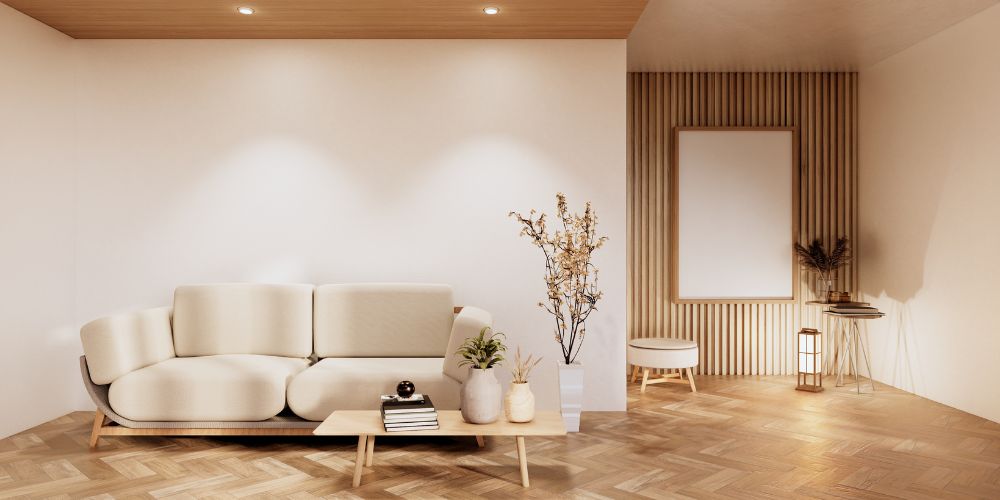
Minimalist decor, which focuses on simplicity and functionality, should be perfect for small spaces to keep an area clean and open. This is because simple interior design eliminates excess focus on the bare essentials, this way, clutter cannot start to build up, significantly adding to the room’s beauty.
- Use only a few neutrals to create a transparent base color palette with a few accent pieces to keep the look cohesive and not cluttered.
- Limit decor to a few statement items that serve aesthetic and practical purposes.
Eliminating the unnecessary allows the space to feel calm and organized, and to feel spacious.
Conclusion
Small space, big style, it takes a bit of thoughtful design and creative strategies. Do follow these ten tips for simple interior design: declutter, maximize your vertical space, go for multifunctional furniture, use light colors, maximize natural light, use mirrors, pay attention to scale, incorporate built-in storage, use area rugs, and above all, attach yourself to minimalist decor.
Planning and creativity make it possible to make the most of minimal square footage and turn compact areas into functional and stylish living spaces. Try different methods for the desired look, or take professional advice from Alexia Home Designs.

